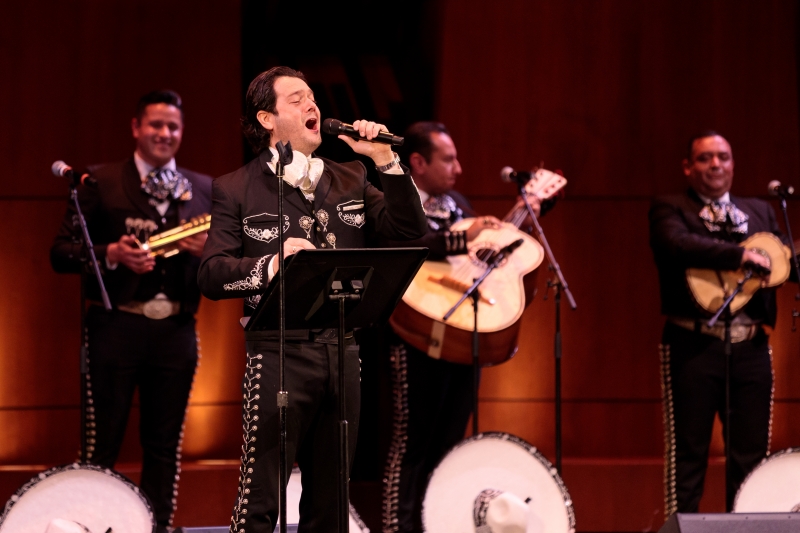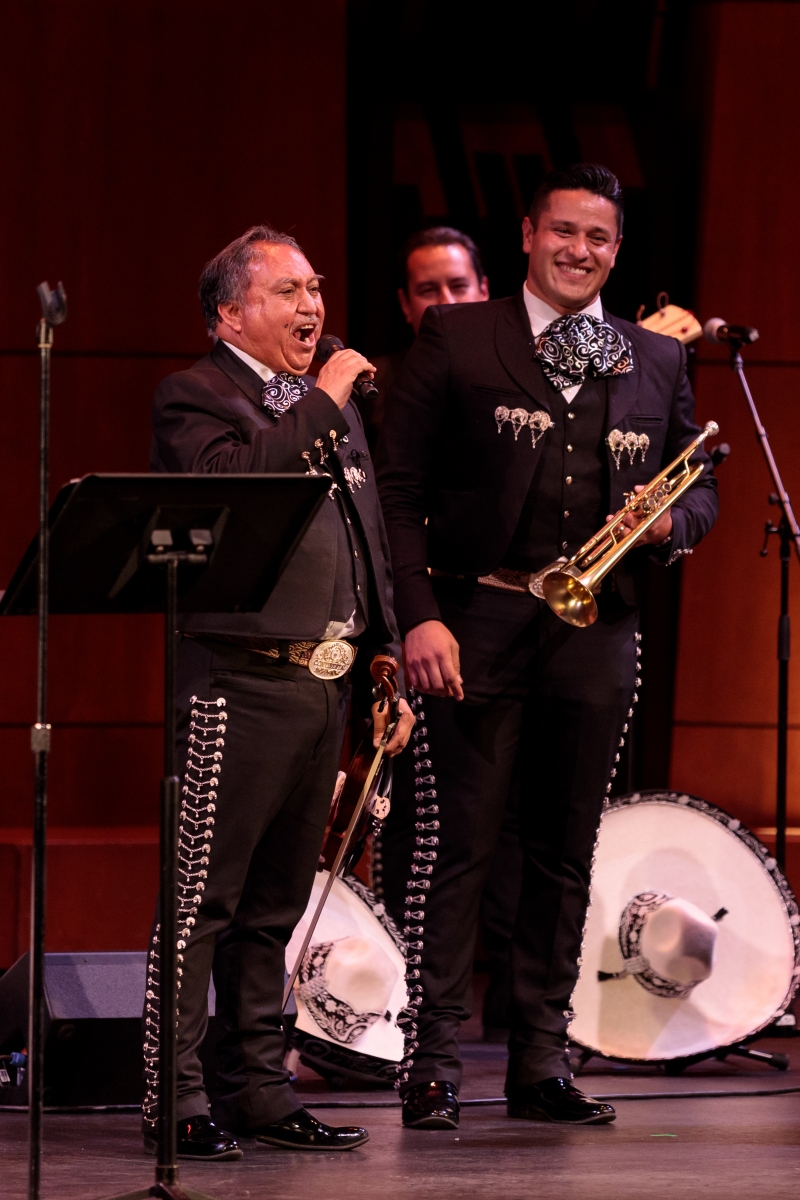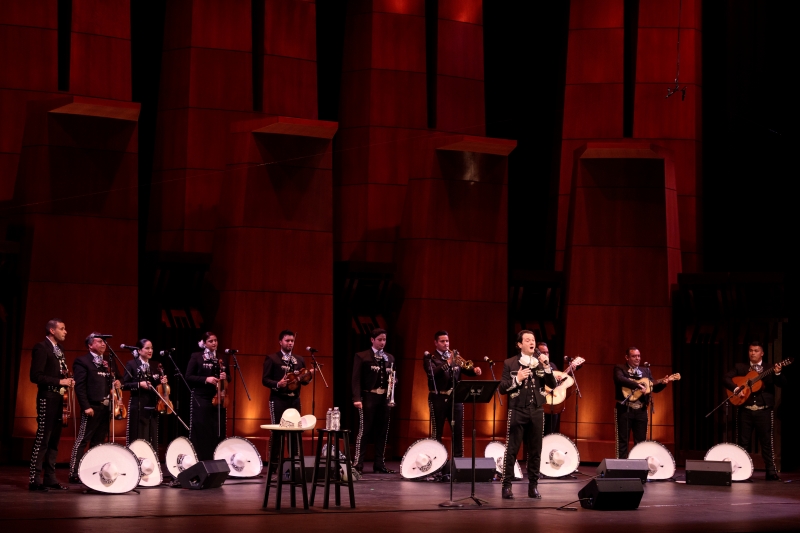Review: SAN DIEGO OPERA PRESENTS ARTURO CHACÓN-CRUZ at California Center For The Arts, Escondido
Tenor Sings Opera, Mariachi and more

It seems variety is the spice of classical music and opera in San Diego. The city's symphony orchestra plans to appear in a dozen or more venues next year, and the opera company has used a different venue for each of its three recent recital concerts. The latest of these featured Mexican-born tenor Arturo Chacón-Cruz, and the operatic tenor's program choices continued the varietal spice.
The first half began with five Italian canciones followed by four Spanish zarzuelas and concluded with two Puccini arias. But many in the audience were waiting for the all-mariachi second half. Their reward was 11 Mexican-Spanish favorites sung in front of the 10-piece Mariachi Continental de México led by musical director Silvano Chavez.
In his pre-concert comments San Diego Opera's General Director David Bennett emphasized his opera company's dedication to the "expressive power" of the human voice, something he'd elaborated on in my recent interview of him. Few singers have garnered the praise Chacón-Cruz has for just that power, and on this evening the sincere intensity of feeling for each of the program's selections proved that praise has been warranted. The additional common threads in the unusual mix of pieces were the quality and accuracy of his singing and an extraordinary rapport with the audience. The latter was quickly achieved when he invited a sing-along for the opening Neapolitan song "Funiculi, Funicula," and the recital's success was all but assured. Sung with heart and power, "O sole mio" was the biggest crowd-pleaser among the opening Italian songs.
Chacón-Cruz introduced his set of zarzuelas by explaining that he'd won the Plácido Domingo Zarzuela Award in Operalia 2005. And then he sang "No puede ser," the romantic Spanish

ballad he'd performed to win the award. While the Italian songs work well with both operatic and pop singers, zarzuelas are written for operatic voices and so displayed the tenor's strength and stamina. After singing three of them, he turned the stage over to his long-time friend and talented piano accompanist Jeremy Frank who concluded the first half with his solo arrangement of a lively, Latin-rhythmed mix of zarzuela melodies.
Although Chacón-Cruz gained worldwide fame as an operatic tenor, the recital included only two arias, both by Puccini and familiar to any opera lover, "E lucevan le stelle" from Tosca and "Nessun dorma" from TURANDOT, probably the best-known tenor aria because of Pavarotti's hit version. Chacón-Cruz will sing it in a 2023 production of TURANDOT when he debuts in the role of Calaf. His warmth, power and effortless wide range all but guarantee a successful appearance.
 The tenor had no thought of opera when young. He began and was discovered as a mariachi singer. Opera fans may have been disappointed after intermission when he appeared for the first time with a largely unneeded microphone and in the traditional mariachi Mexican cowboy garb, complete with a huge sombrero. But even the stodgiest audience member was likely to have been charmed by Chacón-Cruz's clear pleasure in revisiting the genre.
The tenor had no thought of opera when young. He began and was discovered as a mariachi singer. Opera fans may have been disappointed after intermission when he appeared for the first time with a largely unneeded microphone and in the traditional mariachi Mexican cowboy garb, complete with a huge sombrero. But even the stodgiest audience member was likely to have been charmed by Chacón-Cruz's clear pleasure in revisiting the genre.
The skill and precision of Mariachi Continental de México with its five violins, two trumpets and three guitar-like instruments was a romantic pleasure. A few in the audience near me had

quietly sung Spanish zarzuela lyrics with Chacón-Cruz, but it seemed a quarter of the audience knew many of the mariachi lyrics. Even gringos such as I could join the choruses of Tomás Méndez's "Cucurrucucú" and Quirino Mendoza y Cortés' "Cielito lindo." The spirit of the second half of the concert was perhaps best captured when the tenor had three band members come forward to compete for the best grito, the excited mariachi yell roughly equivalent to a Western cowboy's YEE HAH!!! Laughter and enthusiastic applause was used to determine the winner.
For an encore, Chacón-Cruz chose Agustín Lara's familiar "Granada," a favorite of mentor and friend Placido Domingo. Both Spanish and English-speaking members of the audience jumped up to cheer as the entertaining concert reached its end.

For future schedule and ticket information visit the San Diego Opera website.
Reader Reviews

Videos

